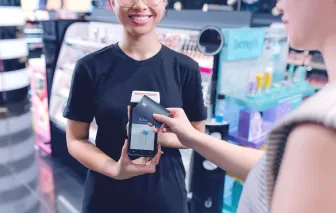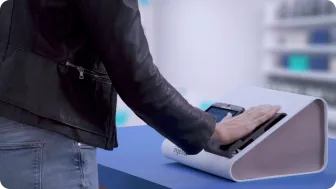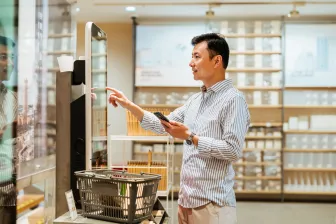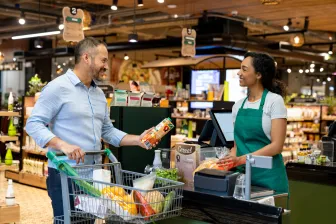Businesses and business solutions providers have been hearing a lot of buzz about “ softPOS.” This technology, also known as “tap to mobile”, “tap on phone” or "Tap to Pay" allows merchants to accept contactless payments with smartphones or tablets or just about any device with an NFC chip – there’s no need to purchase and deploy a PIN pad or other payment terminal equipment.
The technology has evolved relatively quickly, particularly since the Payment Card Industry Security Standards Council (PCI SSC) published the Mobile Payments on Consumer Off-the-Shelf (MPoC) standard in 2022. This standard makes it easier to develop, maintain, and secure softPOS solutions.
So much innovation and advancement have occurred in the past few years in the softPOS space that it’s probably been hard for you to keep up. If you’re like most retailers and solutions providers, you have some notions about this technology based on tap on phone payments from years ago.
To bring you up to date, here are answers to some common questions about today’s softPOS that can help you decide if this technology can provide value to your business.
Which mobile devices can you turn into payment devices with softPOS?
Tap to Pay can work on a variety of smartphones and tablets that have an NFC (near field communications) chip. If you have a digital wallet on your device and use Tap to Pay you can most likely use this device and Tap to be Paid. An advantage of this technology is that once you have an account, you can use it on different devices. If a device breaks, a merchant’s team can access their account and configure another compatible device, in minutes. Furthermore, if several employees accept payments at any given time, they can use mobile devices the business already owns, giving businesses new flexibility without the traditional expense of new hardware.
Is softPOS associated with specific acquirers or payment processors?
While some solutions are tied to certain processors, others are processor-agnostic. If you ask your current payments partner about Tap To Pay solution, you’ll probably find out they can enable you to accept these payments.
Does this technology require users to rip and replace payment solutions?
This technology isn’t all or nothing. It can be a part of an integrated software vendor (ISV) environment that includes traditional stationary payment terminals, mobile payment devices, and semi-attended payments. SoftPOS can be used to complement those other companion terminal capabilities. So, even if a merchant has a payment terminal on the checkout counter, softPOS on a smartphone could enable payments in other places, like a restaurant drive-thru, mobile sales or services, a concession or concierge stand, or a sidewalk cookie sales. Moreover, the solution integrates with the merchant’s system, so all payments data is shared with the back-office and accounting systems.
Is it secure?
Solutions developed and maintained with PCI standards are secure. The MPoC standard even covers how to accept a PIN on a consumer device when prompted. softPOS also uses the same payments infrastructure as EMV payments, keeping transactions secure. In addition, this technology can leverage security features of the devices themselves, such as data encryption & device attestation to protect payment data. View payment activity, Activate &/ Deactivate devices add new users with roles all from a management dashboard.
Is it just for small merchants?
It’s easy to see how this technology benefits small and medium-sized businesses (SMBs). Some ride-share drivers, food truck operators, mom-and-pop shop proprietors, and other small and micro-merchants don’t have the ability to accept contactless payments. Tap to Pay removes the financial and operational barriers that stand in their way. However, this technology also has benefits for large and enterprise businesses. It’s an easy way to enhance customer experiences with on-the-spot service, give every sales associate line-busting capabilities, and ensure business continuity if a network disruption occurs.
Additionally, the bigger the business, the more a merchant can save with Tap to Pay. It means fewer payment devices to purchase, maintain, and replace. Smartphones and tablets can be multifunctional, accepting payments in addition to running mobile POS, enabling communication, or managing order pickup – and the total cost of ownership (TCO) of device deployments can significantly decrease. And lower the cost & risks of accepting Card Not Present transactions with Card Present Interchange. And easily introduce a brandable payment application that can works with your business image & payment needs.
One Last Question: Is It for Real?
The answer is yes.
SoftPOS is disrupting payments, enhancing customer experiences, completing digital transactions in more places - and becoming a competitive differentiator.
Are you ready to learn more about the value this technology can provide to your business? We have the answers. Contact us.











